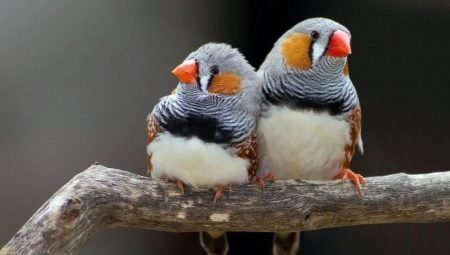Zebra amadins are very beautiful little birds. They are not demanding in care, so their maintenance does not cause great difficulties. However, zebra amadins have their own characteristics and distinctive features, which are important to consider if you want to get these birds. In this article, we will look at how to properly care for amadins.
Description
Zebra Amadins are small and cheerful birds. Belong to the weaver family. The homeland of these charming birds is Australia. In Europe and other countries of the world, they appeared relatively recently (no more than 200 years ago).
Under natural conditions, zebra amadins live in a wide variety of areas. It can be forests, meadows, and fields. Birds feel comfortable both in wasteland and in close proximity to humans.
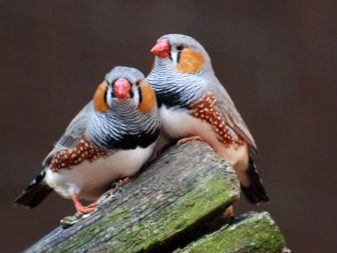
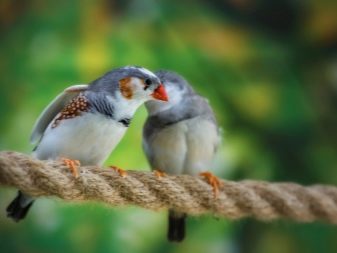

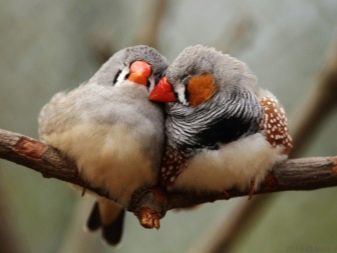
Zebra amadins are distinguished by a beak of a specific structure. It is cone-shaped and has an orange color.
The color of the males of zebra madadins is bright and saturated. Females are more dull, not so attract attention. The same "calm" shades of plumage, as in females, males have only while young.
Amadins themselves are flocking birds. For this reason, experts advise starting a couple of these birds at once, so that they would not be bored and sad. The lonely Amadina will soon wither.
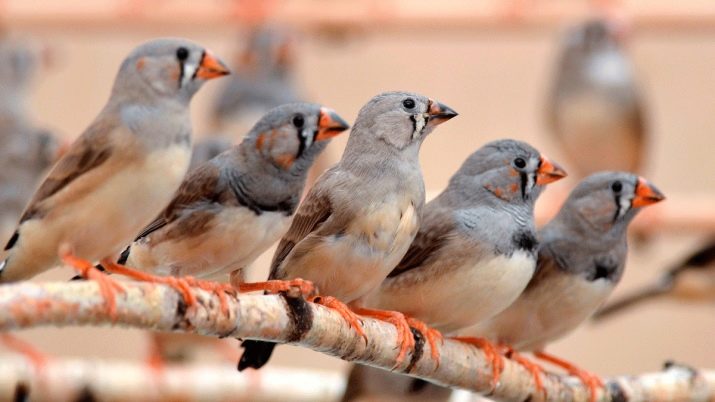
Life span
On average, zebra amadins live from 7 to 8 years. Many factors influence their lifespan in captivity.
- Incorrect breeding and place of purchase. Genetic predisposition plays an important role in the life span of birds. A large number of attempts by breeders to develop new mutational varieties of these birds have led to serious congenital diseases in some individuals. Often the chicks die while still in the egg. The purchase of a zebra amadina in a pet store or in the bird market does not give any guarantees that the pet will be perfectly healthy and young.
- Improper care and maintenance. People who do not have experience keeping these Australian birds often mistakenly plant other birds for them. As a result, such a neighborhood ends in an endless struggle for food and territory. In such an environment, the Amadins begin to feel sad, exhausted and sick. There are injuries ending for the death of birds. Improper care and feeding of zebra birds most often leads to their early death.
- Injury, stress. Frequent and dramatic changes in the situation can seriously harm the birds. Surviving, the Amadins refuse water and food, which ends with dehydration. You can not disturb these individuals, especially at first. Loud noise and other frightening factors can also harm birds. Also in flight, they can get injuries that will lead to their death.


How to determine the age?
To find out what the age of birds of this species is, one should pay attention to such characteristics.
- Young zebra madadins do not move very confidently, they can lose coordination of movements. They fly poorly, so most of the time they sit at the bottom of the cage.
- In young individuals, the beak is more transparent. There is no damage on it. The skin on the legs is thin, with small, barely noticeable scales. Claws are short and neat.
- Before the first molt, young Amadins have small feathers. In young species of certain species, the plumage is dimmer.
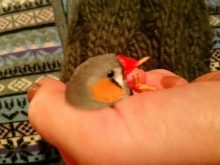
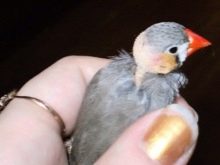
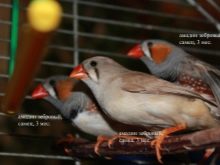
Growing conditions
The content of zebra birds is not difficult. To make the birds feel comfortable, they do not need to equip a huge aviary, as is the case with noble parrots. An ordinary standard bird cage is enough for them. The height of the structure can be from 0.9 to 1 m, and the width and height can be between 0.35 and 0.4 m. The cage must be regularly cleaned and all remaining husks removed from oats and millet. Such procedures will be needed at least once a week, otherwise debris and dust will soon be scattered throughout the room.
The ideal temperature for keeping birds is 18-22 degrees. Temperature changes can adversely affect bird health. So that the feathers of amadins develop normally and for the prevention of rickets, it is recommended to resort to UV radiation with the help of lamps. And in the warm season, the cage can be taken out to the balcony or to the yard. It is better to choose a place with a shadow.
In the cage of zebra birds, you need to install not only a drinking bowl, but also a bathing suit. Frequent bathing is an integral part of the life of these birds. So they keep the feathers clean, relieve skin irritations. Often, the Amadins splash in the water with such pleasure that after that they hardly even find strength even when flying.

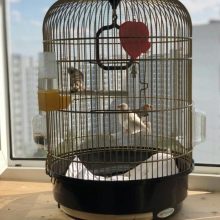
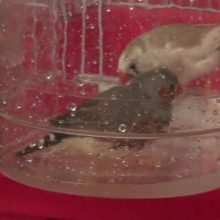
How to care?
Zebra amadins need proper and regular care. This will determine how long the bird will live and how its health will be. The main thing that the owner should not forget is the level of purity of the cell in which the birds of the species in question live. The design must be disinfected at least 1 time per month, otherwise dangerous parasites will appear there. Before proceeding with disinfecting measures, all dust and dirt must be removed from the cage, washed with boiling water.
Next, all the gaps in the cell structure will need to be treated with a disinsectal solution. This treatment should be carried out using a brush. As soon as the cell dries, it must be washed with hot water and soap. It is important to ensure that no traces of used solutions remain on the surface of the structure.
For the duration of the procedures, the birds must be moved from the aviary to another place. If you neglect such actions, birds can become victims of a tick of a poohopera, which poses a danger not only to them, but also to the owners.


In the cage you need to put a drinker in which there should always be clean water. It is advisable to choose closable containers that will not trash or excrement. Drinkers should be washed periodically using table salt or millet.
It is important to install open swimsuits. They are poured with settled or boiled water. Its height should be no more than 2 cm.
It is better to install the feeder between the poles so that the feed is contaminated as little as possible. A drinking bowls and bathing is recommended to choose mounted.
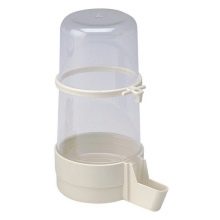


Food and drink in the cells need to be changed daily. When approaching a design with birds, you should be careful. You should not make sudden movements, you can talk with birds, but only in a calm voice. Thus, the Amadins are more likely to adapt to humans.
It is necessary to place a container with sand in the cage where zebra amadins live. It will also have to be changed periodically.
In the premises where the birds are kept, there should not be strong drafts or cold. Temperature extremes should be avoided. You should not smoke next to the amadines, since tobacco smoke and other carbon monoxide gases can cause serious harm to the body of birds.

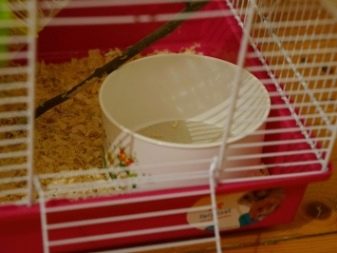
What and how to feed?
The considered amadins must be nourished properly. Birds should be given food based on a grain mix of 6-8 elements. The main component should be millet. For 1 kg of millet you need to take:
- 250 g of meadow grass seeds (for example, plantain or dandelion);
- 100 g of seeds of mogar, chumiza, lettuce, hemp;
- 50 g of flax seed;
- 150 g of oatmeal;
- 300 g canary seed.
Feeding zebra birds should be carried out 1 time per day, 1 teaspoon per individual. Their diet is allowed to be diluted with a variety of cereals (for example, millet, buckwheat). It is important to add fresh greens to their menu, for example, dill or parsley. Fruits, vegetables, berries will not be superfluous.
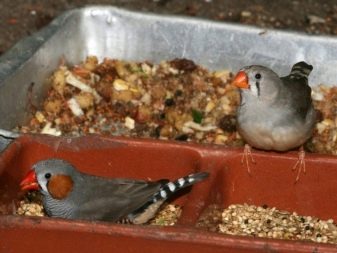
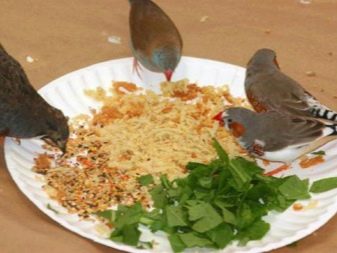
Amadins should be given not only a balanced diet, but also eggs in small quantities. They must be hard boiled. It is also worth feeding the birds with cottage cheese, live products (bloodworms, hamarus). The latter types of food are especially important for birds at the breeding stage.
In the summer season, feed mixtures should be diluted with chopped sheets of plantain, lettuce or dandelion. In winter, sprouted grains of wheat, millet, oats or barley will be an ideal supplement.
If you do not want to independently prepare nutrient mixtures for these charming birds, you can buy a ready-made product in the store that includes all the necessary components. Such feeds are sold at most pet stores.
It is recommended to select branded high quality options.
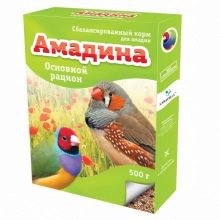
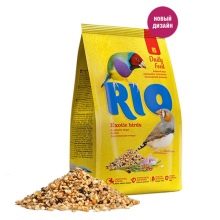
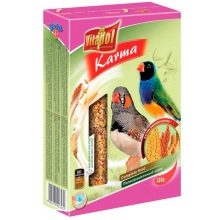
How to distinguish a female from a male?
Significant external differences between females and males are not observed, but nevertheless some nuances of color can be traced, allowing to determine the gender of the bird. Males have a head, neck and back with a characteristic ash color. They have large tail feathers, black with snow-white blotches. There are dark stripes under the eyes, as if drawn by a makeup artist. In the area under the eyes, the males are black in color. The breasts and neck of males are striped (like a zebra). Also in the color of the plumage of the male there are brownish sides with white spots.
The color of the plumage of females differs little from the color of males. The main difference is that they look less bright and saturated. The absence of chestnut scales on the plumage is characteristic. On the female it will not be possible to detect brown areas, stripes on her chest will also not be. The males have a similar color, but only while they are young. In young individuals, the plumage is also not too bright, the color of the beak is black, brown shades prevail.
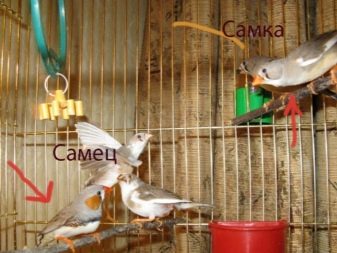
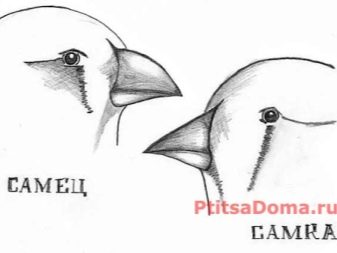
Another characteristic feature that distinguishes a male from a female is his singing. Only the boy birds sing loudly and melodiously.
It is worth taking a closer look at the size of the birds to determine their gender. Usually females are smaller than males. The latter have a thicker, larger and brighter beak. In some individuals, a small hump can be seen at the base of the beak, which females do not have.

Breeding
If you place a pair of healthy zebra amadins in one cage, then the likelihood that they will not multiply will be very small. These feathered beauties breed very well in captivity. In a home-grown environment, the birds begin to bear offspring as soon as they reach the age of two months. But experts advise not to rush, but to wait a bit with the reproduction of amadins. It is advisable to wait until the birds are six months or a year old.
In captivity, a small box serving as a nest is a good fit for breeding zebra amadins. Instead, they often use a special wicker nest. It is necessary to provide birds with all the necessary materials, from which they can build a nest on their own.
If this point is neglected, the Amadins will use absolutely everything they find for the construction. They will steal feathers from their cage neighbors.

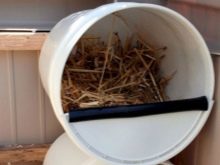

Ideally, birds should provide nesting materials. For this, coconut fiber, jute is suitable. These components must simply be carefully placed in the cage where the birds live. As soon as they choose a place for the future nest, they will begin to stay there overnight.
Zebra Amadins will surely rush violently to guard their nest, pursue other birds, if they are too close. Usually zebra birds protect their nest with heart-rending cries. It comes to fights and fights in extremely rare cases.
The number of eggs laid in most cases is from 2 to 7 pieces. Both birds incubate eggs. The incubation period takes from 14 to 16 days. During this period, a touching sight appears before the eyes of the owners. As soon as the chicks hatch, they are completely defenseless, fragile and vulnerable. Kids are covered with a rare fluff, they have tiny sizes. At this time, the chicks are still blind. They usually open their eyes only after a week.
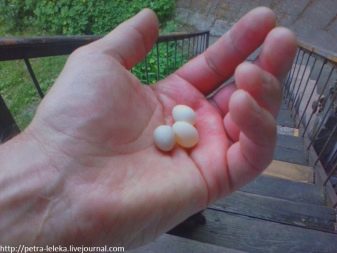
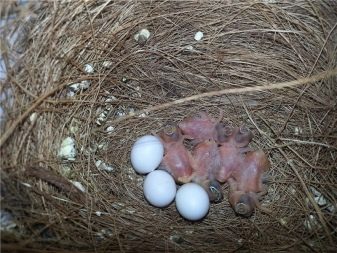
Chicks do not leave the nest until 3 weeks have passed. During this time, they are covered with plumage, but the color of their beak will not be red or bright orange (as in adults), but black. Its color will change only upon completion of the full plumage.
Some chicks of a zebra bird that just got out of the nest are able to fly well. Other individuals may remain at the bottom of the cell without rising into the air. Parents will feed them for another 2-3 weeks. An indicator that young growth has matured and has grown will be an increase in noise from them.
The more mature the zebra amadins become, the more insignificant the parents will be to take care of their food. Growing individuals always become louder, because the maintenance of a house of such a feathered family can cause a lot of inconvenience.
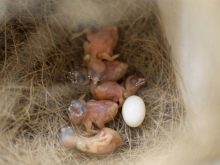

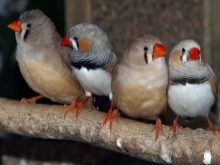
Useful tips and tricks
The content of the birds in question cannot be called too complicated. Even a novice poultry breeder, who previously had no business with amadins, will cope with this. If you want to get such charming creatures, It’s worth adopting some useful tips and tricks.
- With the onset of the winter season, experts recommend giving a drop of fish oil to zebra amadins. It is advisable to do this once a week.
- When equipping a cage or aviary for zebra birds, you need to make sure that there are secluded places in which birds can hide from prying eyes.
- As mentioned above, zebra amadins are very fond of swimming, therefore, in addition to the drinking bowl, a bathing suit should be installed in the cage.Around it is to lay out plastic so that the litter in the "bird house" does not get wet.
- Keep the state of the birds under control. If you notice that the birds refuse food and water, behave strangely, become lethargic and painful, then you should contact your veterinarian as soon as possible. A specialist will help determine what the problem is and how to fix it.
- Keeping zebra amadins in a huge cage or large enclosure makes sense if you are interested in genetics and want to take on breeding work, or plan to become a large breeder and raise birds for sale. In other cases, there is no sense in a large structure for keeping Australian birds.
- The ideal home for Amadins is full metal cells. They are both hygienic and durable. Sunlight necessary for birds passes easily through the rods. A good solution is a squared cage with a flat top. Such a design will create additional convenience, because it will be possible to significantly save free space and put several cells on top of each other.
- During molting, it is recommended that zebra amadins be given special vitamin mixtures. They will contribute to the growth of feathers, improving their natural color. Such funds need to be bought in specialized stores.
- It is impossible to leave the remains of products in a cage with amadins. They must be removed from the structure immediately, otherwise they will begin to rot and deteriorate, and this will not entail anything good.
- It is important to treat not only the cage itself with disinfectants, but also the pallet, poles, feeders, and sand compartments. A 2% solution of chloramine and carbolic acid is ideally suited for this.
- The pallet in the cage can be treated with powder chamomile and feverfew. They are simply poured onto the surface of the base in a small layer, thick paper is laid on top and sand is poured.
- If you keep zebra amadins at home, you should have transport and quarantine cells in your arsenal. For the first time, a newly purchased bird should be placed in quarantine to avoid possible infections in the general house.
- Choosing the best place to place a cage with birds, it is advisable to give preference to the territory near the window along the wall. The sun should fall on birds at least 2-3 hours a day.
- Zebra amadins are very sensitive to temperature changes, so be careful to ventilate the room where the bird cage is located. It should also be ensured that other pets do not suddenly appear near the birds - this can become a serious stress for amadins.
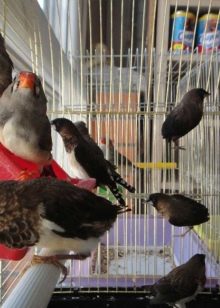
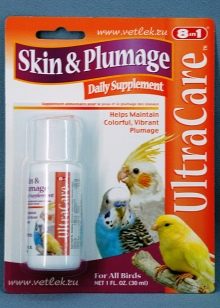
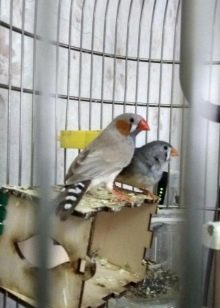
For breeding conditions and caring for zebra amadins, see below.
